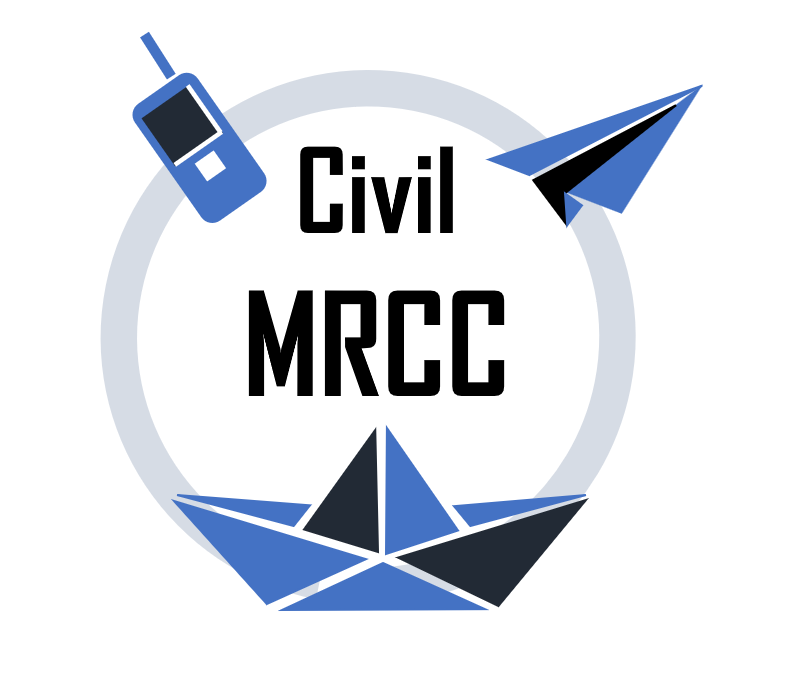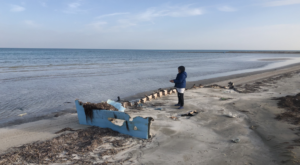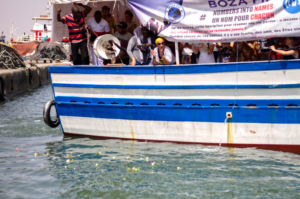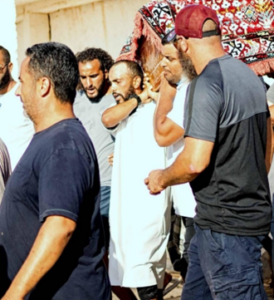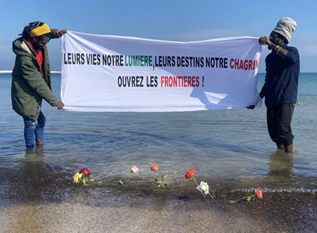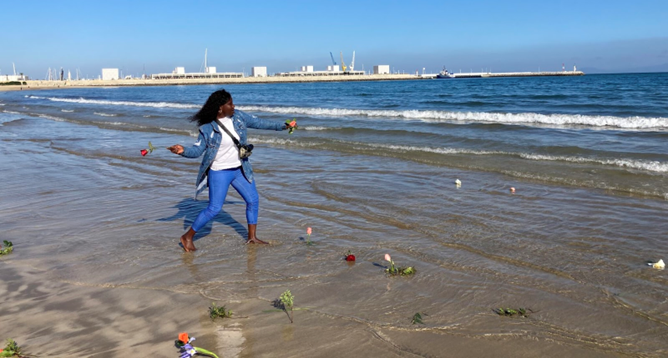This is an introduction article of a series of articles in the next issues of Echoes aiming to explain the different problems that are faced by families in the process of searching for their loved ones, the deficient current system for identification and burial in a dignified manner. For each issue of Echoes, an article will be written to further illustrate, with concrete cases, the political unwillingness to commit to this work of search and identification.
Filippo Furri and Hela Kanakane
For over 20 years, the Mediterranean Sea has been referred to as a huge graveyard. In 2021, a map named “Closing borders kills”(1) attempted to quantify and locate the documented number of people on the move who have died or disappeared at the EU’s (externalized) borders numbering at least 50,873 persons between 1993 and 2020. The number of people dying and disappearing at sea continues to rise. Seeing where these cases are concentrated – on the Canary route, in the Alboran Sea, in the Aegean Sea, and in the central Mediterranean – is enough to explain the direct relationship between the border regime, the militarization of borders and this endless hecatomb.
While the causes and responsibilities of these deaths and disappearances are clearly identified, their consequences are also highly problematic, raising major political confrontations and legal disputes.
The degeneration of the situation, with an increase in the number of lifeless bodies recovered from the shore or at sea, and a rise in the number of missing persons, is having an impact that is beginning to have dramatic effects at several levels on both sides of the Mediterranean: body management systems (health infrastructures such as morgues and hospitals, cemeteries, … ) are not organized and structured to deal with such a large number of victims in a dignified manner; investigation systems are not designed to identify the deceased or missing persons; identification operations are complex; and, consequently most bodies are buried under cover of darkness.
Moreover, while bodies found on land are the responsibility of local administrations (unless national authorities intervene), there is no defined legal framework for bodies at sea, either at national or international level: the willingness and ability to recover bodies depends on the various players involved and remains discretionary today.
In recent years, the number of bodies left at sea has increased: in addition to dozens of boats disappearing without a trace, more and more bodies are being left in the water due to difficulties in recovery during rescue operations, the impossibility for some SAR operators to take victims on board, but mainly due to the indifference of authorities who prefer not to deal with them.
In the central Mediterranean between 2014 and 2018, hundreds of bodies were taken to Italian shores by military assets, coastguards or search and rescue NGOs. Since then, with the geopolitical evolution in the region, the establishment of the so-called Libyan MRCC, and the strengthening of Libyan and Tunisian borders control capacities, as well as the criminalization of NGOs activity at sea, the number of bodies landing in Italy has fallen sharply.
The situation has gradually changed and the majority of victims, since 2019, have been found on the southern shores of the Mediterranean, and registered in a “body management system” that remains highly deficient and unstructured, or are simply left in the water and disappear forever. In this context of the normalization of death in migration, it is becoming increasingly difficult for the families of people who have disappeared or died at sea, whether they are nationals of North African countries or elsewhere, to obtain information about their loved ones and to engage in identification and repatriation procedures.
The International Committee of the Red Cross recently produced a report illustrating the operation of body recovery and management systems in Italy, Greece, and Spain (2022), highlighting a whole series of critical factors (both structural and cyclical) which make identification operations complex, burial practices often expeditious, and access to information very complex for families.
On the northern side of the Mediterranean, we can see that state systems for managing the bodies of people who have died during migration have tried to organize themselves to deal with both isolated (individual) cases and non-isolated events that often involve dozens or hundreds of people. Yet the results of the mobilization of the civil society, which began in Italy with the shipwrecks of October 2013, remain inadequate, due to structural shortcomings, the inability to activate a national emergency mechanism, and the lack of coordination with local players, the objective difficulty of body recovery and identification operations in a context of migration, the lack of coordination of investigation, victim search and identification mechanisms, and the difficulty of families to access these processes.
The claim to stop the deaths at sea and to identify the missing and deceased have not been followed by the real implementation of an effective system capable of offering guardianship to the victims’ families. The management of the shipwrecks near Lampedusa in 2019 and 2020, the interminable disappearances on the way to the Canaries, and the most recent disasters at Cutro or Pylos bear witness to a “case-by-case” management without a coordinated and standardized vision of the problem, a lack of organization between the state actors involved but mostly the unwillingness of authorities to commit to this work of search and identification.
On the southern side, EuromedRights recently published a report that attempts to illustrate the activity of civil society players in North Africa in support of families searching for loved ones, or in identification operations, in countries where the search and management system is in a state of transition, often unstructured or incapable of managing a growing number of victims (Tunisia), or clearly opaque and in critical conditions (as in Libya). Bodies are increasingly being left at sea, disappearing, being found by fishermen or along the seashores, in a way that is totally dissociated and disconnected from the events that are nonetheless often cataloged by activists, international organizations, and national authorities alike.
The Tunisian Minister of the Interior, Kamel Feki, announced (2) that 901 bodies of migrants had been found on the Tunisian coast between January 1 and July 20, 2023 alone. This situation has brought forensic structures and local administrations to a near collapse, unable to cope with such numbers (especially in the region of Sfax), and unable to organize a coordinated management process, between identification, burial, or repatriation.

One of the possible solutions, for the southern side of the Mediterranean as for the northern side would be to set up a coordinated search and identification system, to enshrine the obligation to identify victims in national, European, and international law, and to offer real and concrete support to the families of missing and deceased persons. But the aim of strengthening the forensic and identification system remains a “secondary” objective, not because of the absolute necessity of identifying all victims, ensuring dignified treatment and burial of bodies, and providing families with an answer as to the fate of their loved ones. It is secondary, because this system can only be set up – already with enormous difficulties – in the way it is conceived today, in the presence of bodies, in the face of the materiality of death. And bodies are increasingly missing.
The absence of bodies, which deflects the obsession of families in the face of impossible mourning, is becoming more and more a strategy – a strategy that can only be achieved through the presence of bodies. We don’t know how “voluntary” – of “management by disappearance”, if we consider, for example, that last January the Italian Right could rejoice that Italian Interior Minister Piantedosi’s migration control strategy was working, because – to quote UNHCR figures – the number of deaths at sea in Italy was significantly down on the previous year. But not to recover the bodies, not to make phantom shipwrecks count, not to listen to the desperate pleas of families in search of loved ones is a fallacious strategy, because the names of the missing exist, and the bodies are coming back, as witnessed in Tunisia.
However, a complementary solution to the plans for a forensic system capable of better and ideally identifying all victims, and previous to this, would be to work systematically to ensure that as many bodies as possible are recovered from the sea during rescue operations, and as quickly as possible to facilitate identification operations. Alternatively, witnesses to these disappearances should be put in a position to provide reliable information, in complete safety, to help determine the objectivity of the disappearance of a traveling companion or loved one who has taken to the sea.
Clearly, the real and only solution should be to prevent these deaths by enabling everyone to move around freely without having to put their own lives at risk. But we also need to confront this “endless disappearance” today. Without being able to count on the capacity and political will of national authorities in this direction, it is nevertheless possible, as actors in civil society, and in particular for those directly involved in operations at sea, to reflect collectively on this issue, in an attempt to find answers – however partial – both in terms of procedures, techniques and practices for recovering bodies or traces of bodies, testimonies, and elements enabling us to combat these disappearances.
The presence of a body should make it possible to identify it, and many associations, international organizations, researchers and activists are committed to ensuring that these operations are as efficient and transparent as possible, at the cost of calling on the competent authorities in a forceful manner and using legal procedures. This is a fundamental part of the work, and it is essential to give visibility to the activities of these civil actors, as well as to their awareness-raising and family information activities, to enable them to play a direct and active role in identification operations.
But in order to do this, the bodies must be recovered and treated appropriately, as quickly as possible and under the best conditions. And if, for pragmatic reasons, recovery proves impossible, technical devices and practices need to be developed so that the objectivity of a person’s disappearance can be confirmed as accurately, or plausibly, as possible. It would then be a matter of assessing the capacities of each actor involved, and his or her availability to devote part of its activity – although the priority in maritime law remains rescue – to these activities of recovery or search for traces/evidence of disappearance.
(1) Nicolas Lambert, Fermer les frontières tue, 26 February 2020
(2) Kapitalis, Tunisie : 901 corps de migrants repêchés en mer depuis le début de l’année, 28 July 2023
Article published in Echoes#8 – Struggles for Freedom of Movement
